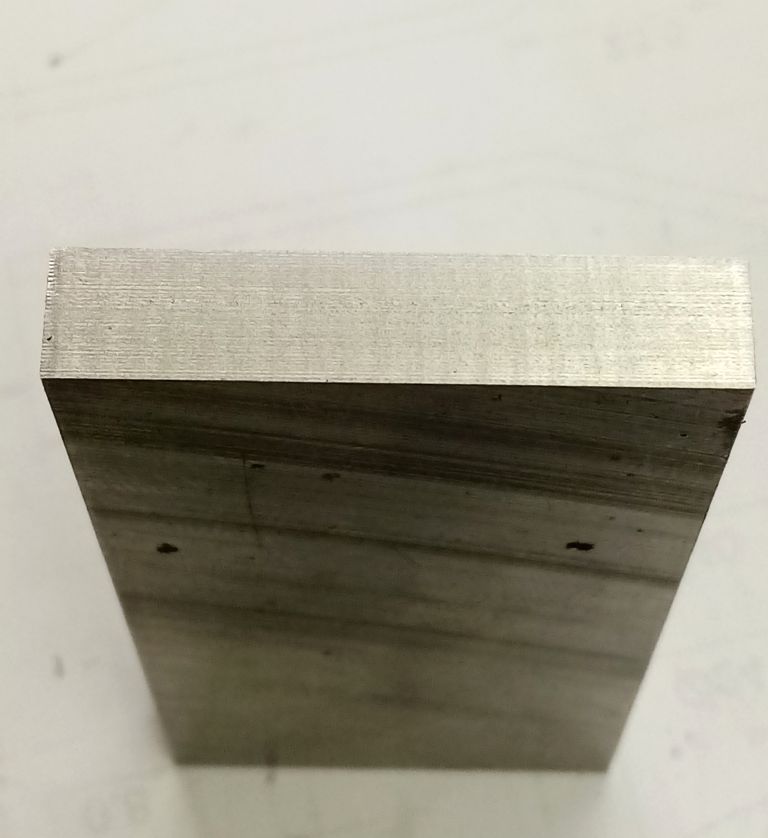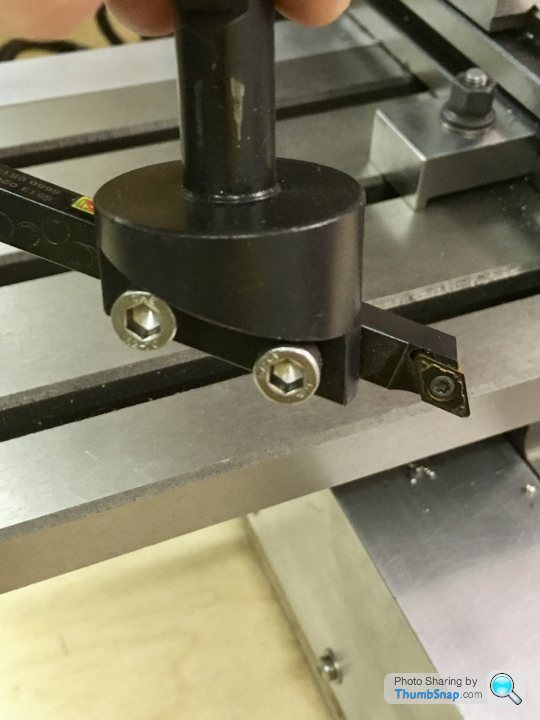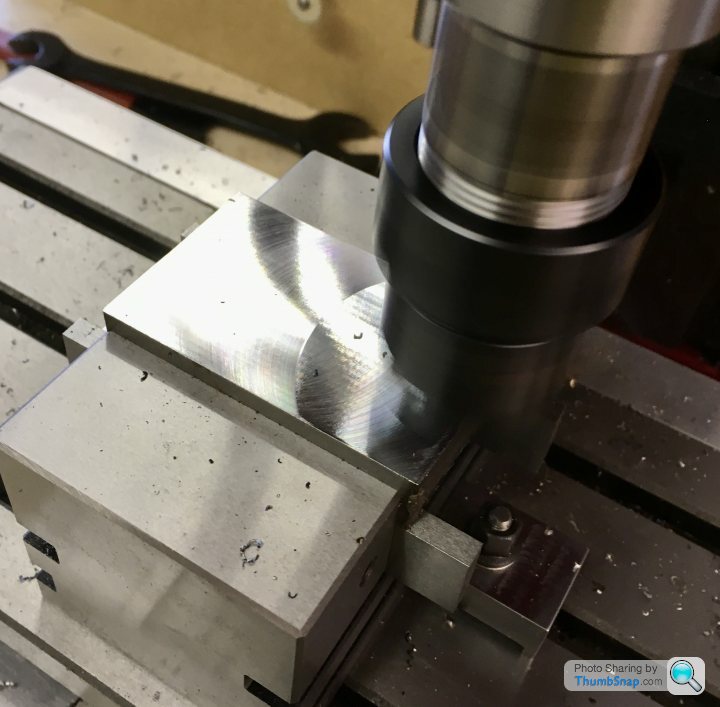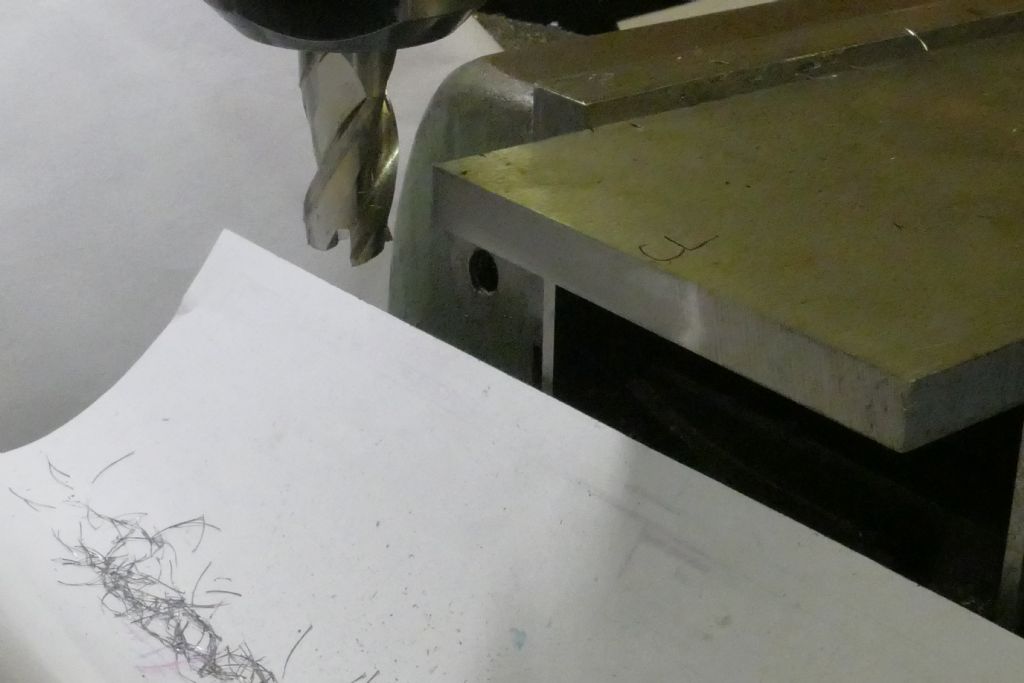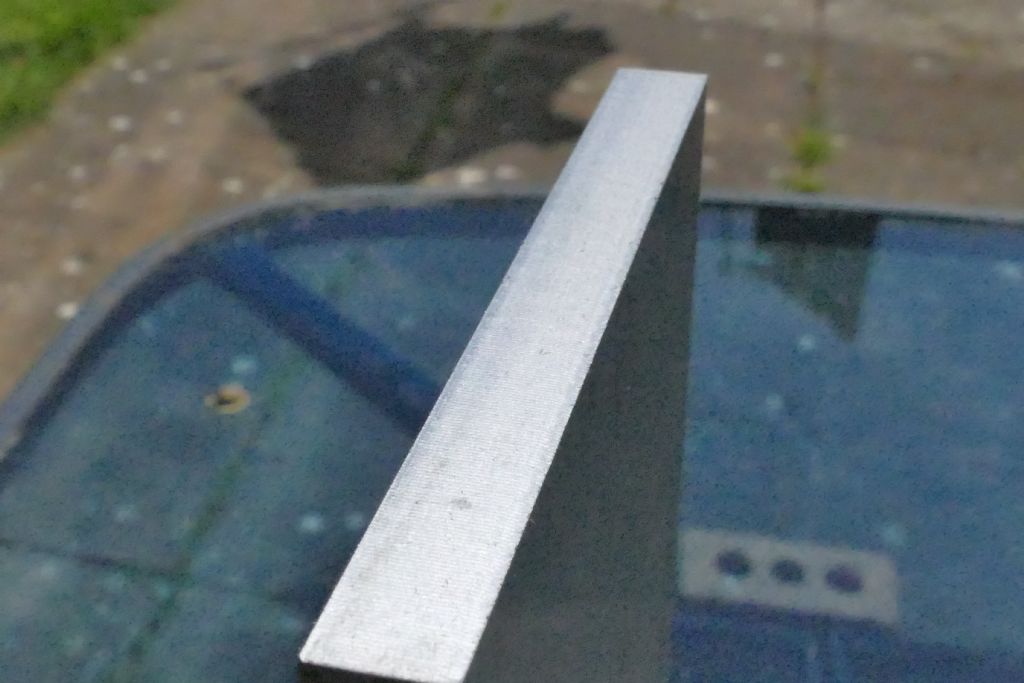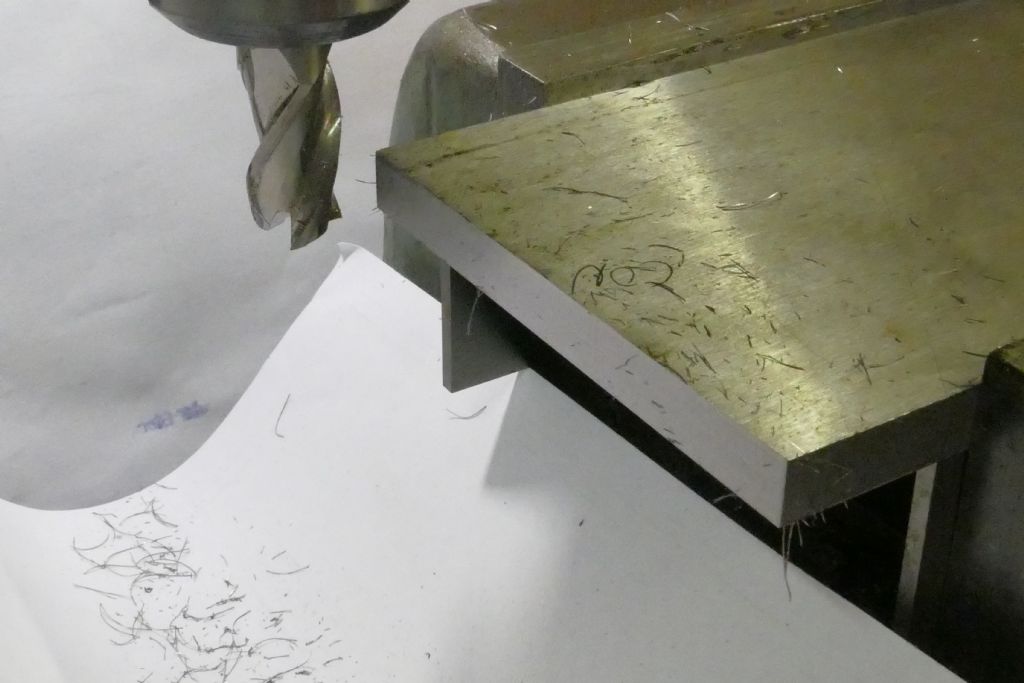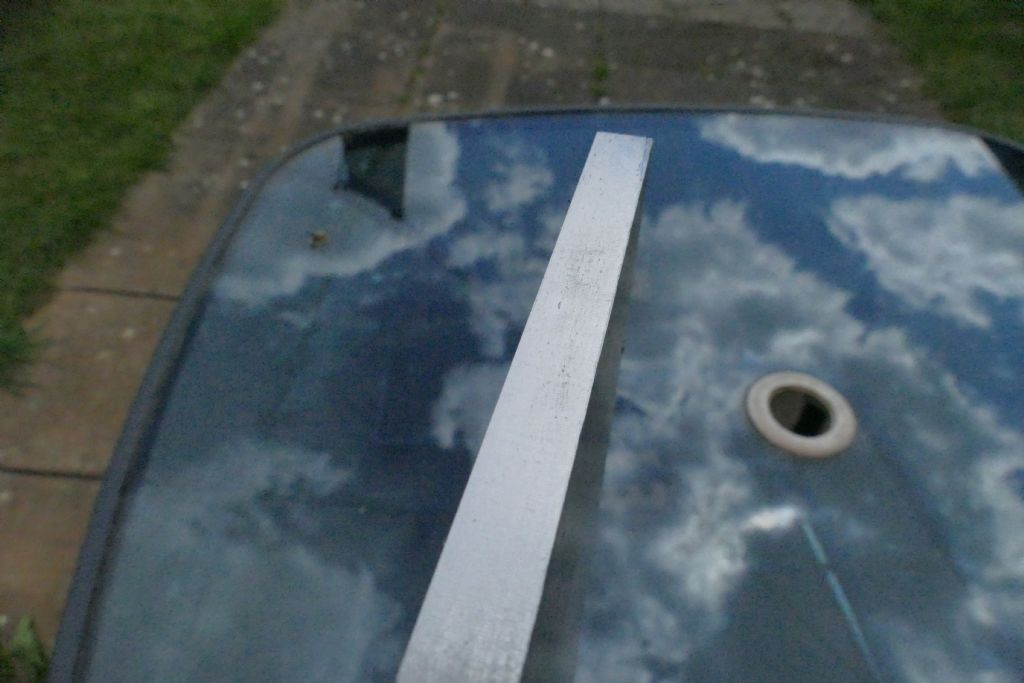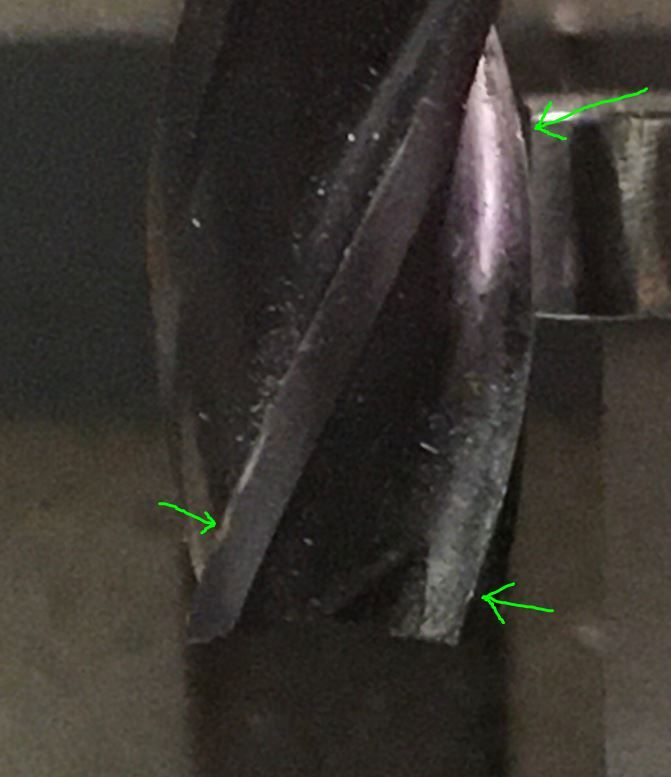Posted by Ron Laden on 14/05/2020 16:58:50:
Just out of interest clock the taper on the inside of the spindle, my SX2P has 0.01mm runout and its done a lot more work than yours. You should be seeing similar or even better, though I suspect 0.01mm is pretty darn good for a small hobby mill and probably wouldnt get any better.
Ron
Ron,
This is the maximum runout on the inside taper of the ER25 collet holder (not the spindle):

Call it 0.02mm?
Again, I tried side milling. This is the setup – everything tapped down and tightened:


Again, the result of a 0.1mm cut is akin to a very loud tuning fork. The vibration/chatter results in a swirly pattern on the workpiece (not too obvious here TBH):

This sample was marked "unhardened tool steel", and was fine for face milling, drilling, fly cutting etc.
Anything deeper than 0.1mm is unbearable – at least for anyone with a shred of mechanical sympathy.
Anything less than 0.1mm and I might as well use sandaper.
I'm wondering now if I've somehow changed the resonant frequency of the column by shimming it. To be fair, the shims are pretty narrow, and some are just in the corners. The deflection under hand load doesn't seem excessive compared with what other folks have said though. Then again I'm running out of ideas.
 Thor 🇳🇴.
Thor 🇳🇴.

